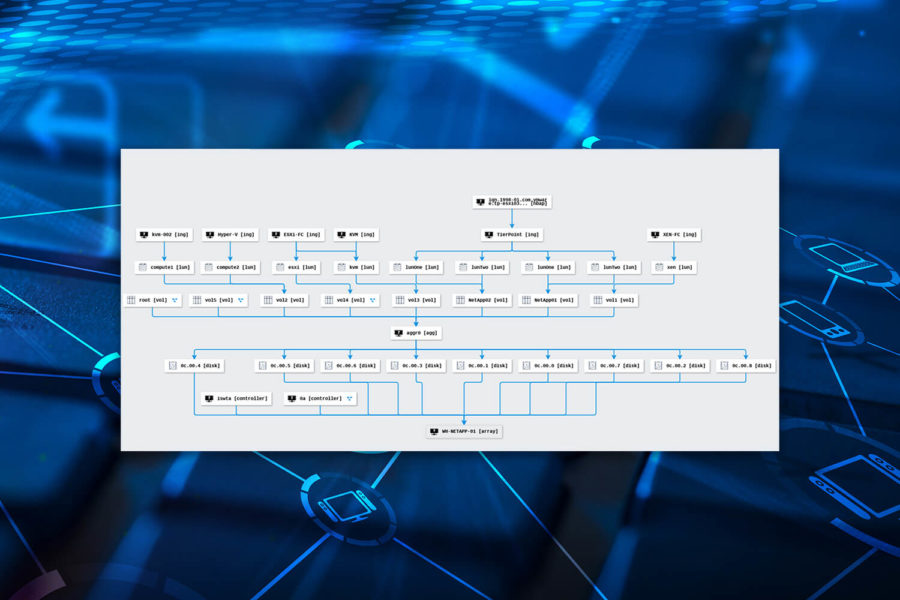Update Overview
Device42 is continuing its ability to expand our discovery capabilities to include a larger portion of our customers’ IT estate. v17.00.00 now includes the ability to discover Storage arrays and Cloud PaaS services. V17.00.00 has new user experience and also includes advanced search capabilities.
Storage Discovery
Device42 now supports storage discovery natively in the product. Storage discovery is a consistent view across multiple vendors in a single platform, With the ability to collect performance metrics, Device42 can provide insights in troubleshooting and to optimize storage.The resource maps helps visualize VM’s to LUN connectivity to help in optimizing storage for specific applications and provide improved lifecycle management.
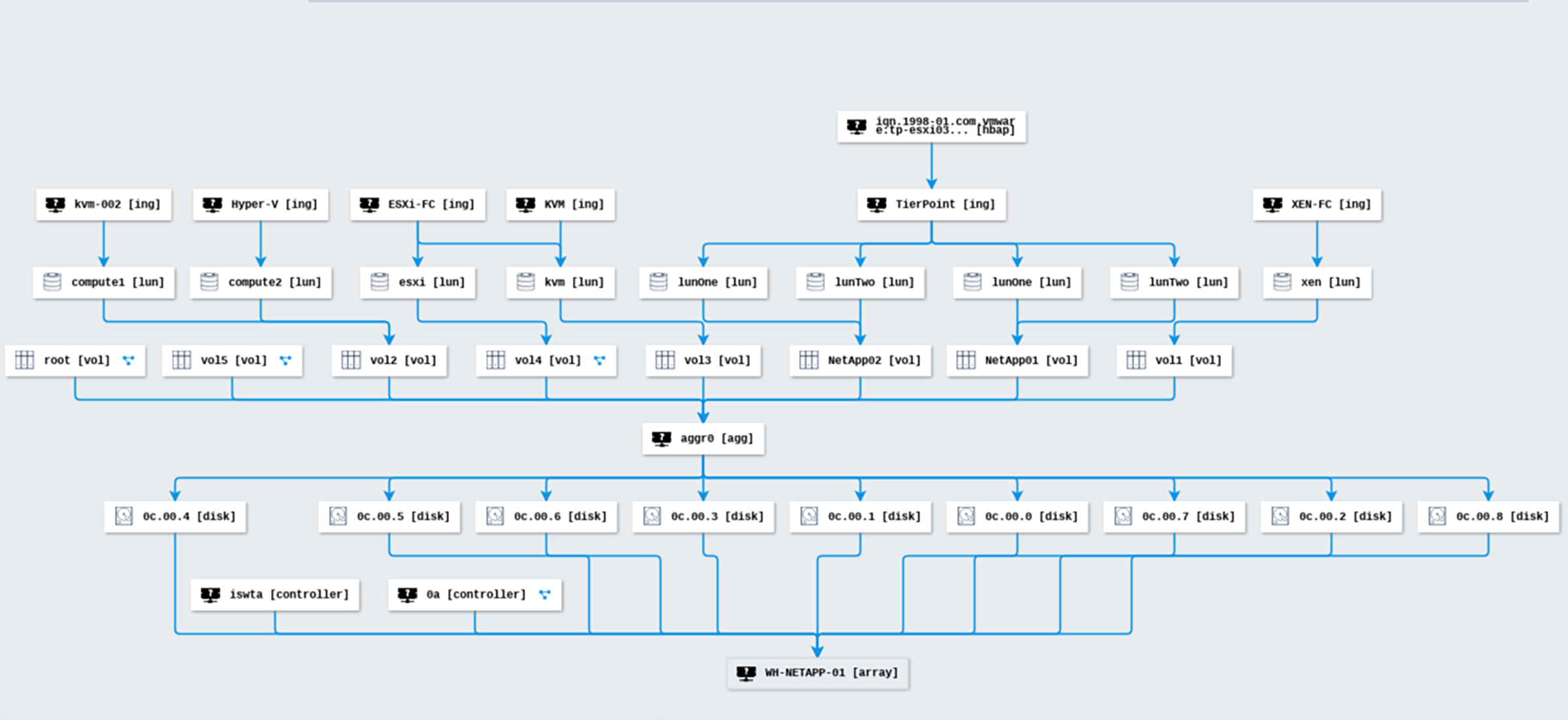
See the Storage Discovery documentation page on details for creating storage discovery jobs.
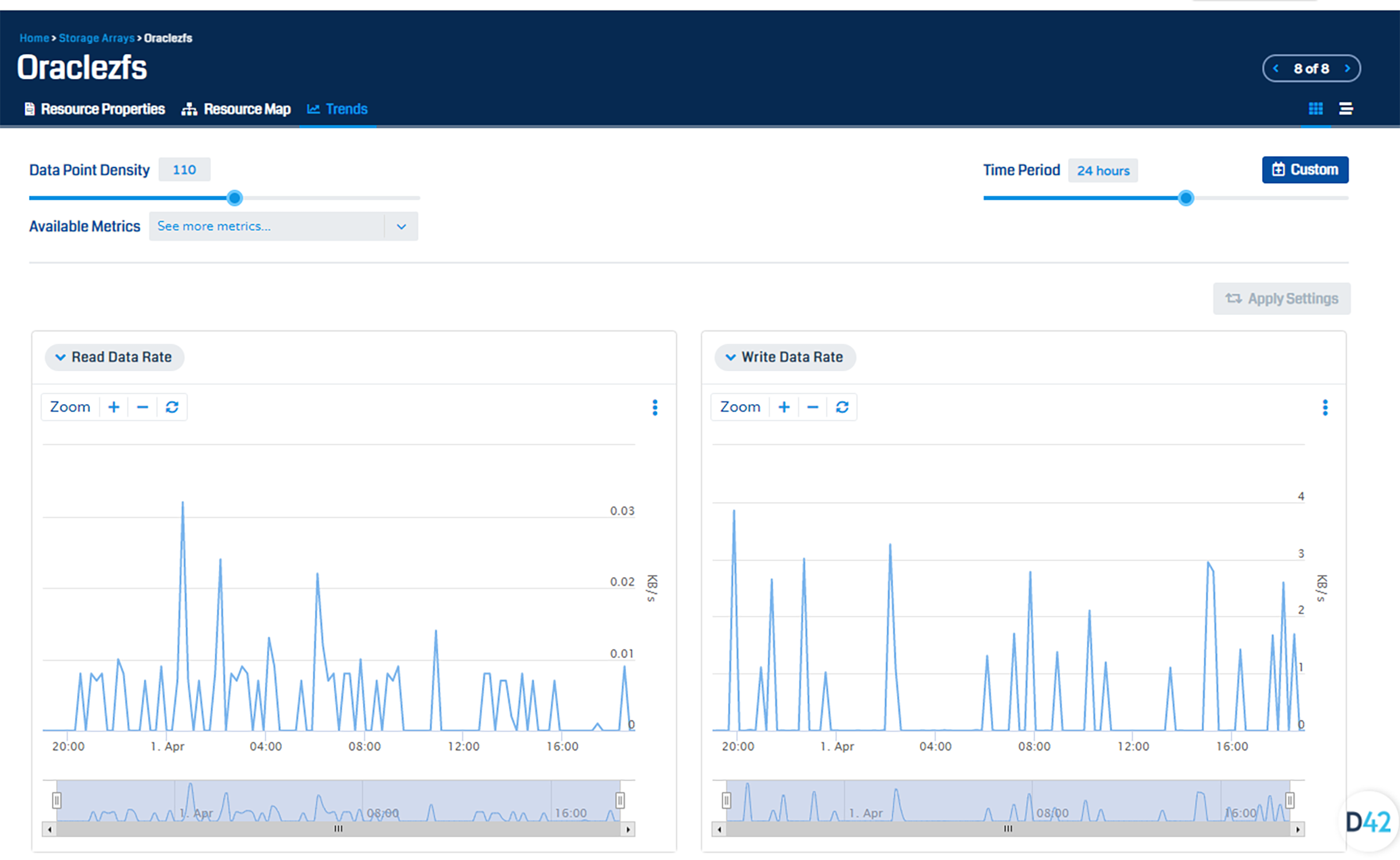
Note: v17.00.00 provides support for the following Storage arrays:
- EMC Data Domain
- EMC Isilon
- EMC Unity
- EMC VNX
- HP 3PAR
- Infinidat
- Netapp
- Oracle ZFS
- Pure Storage
Cloud Discovery
With the proliferation of cloud computing, Device42 wants to help provide you a holistic view of your entire Hybrid IT estate; this includes on-premise and cloud environments. With v17.00.00, Device42 now supports the following Cloud services – AWS RDS, AWS S3, AWS Route53, AWS EBS, Azure SQL Server, GCP Cloud SQL.
Device42 had already supported Cloud compute instances – AWS EC2, Azure Virtual Machines, GCP Cloud instances, along with Kubernetes.
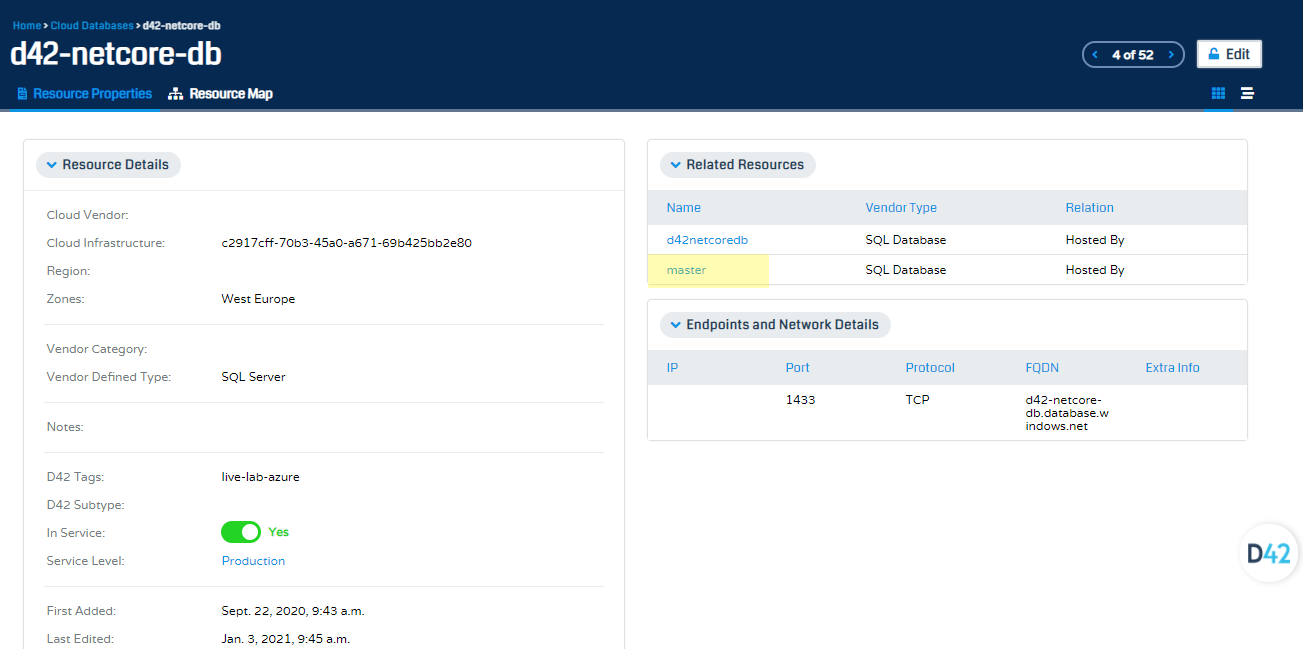
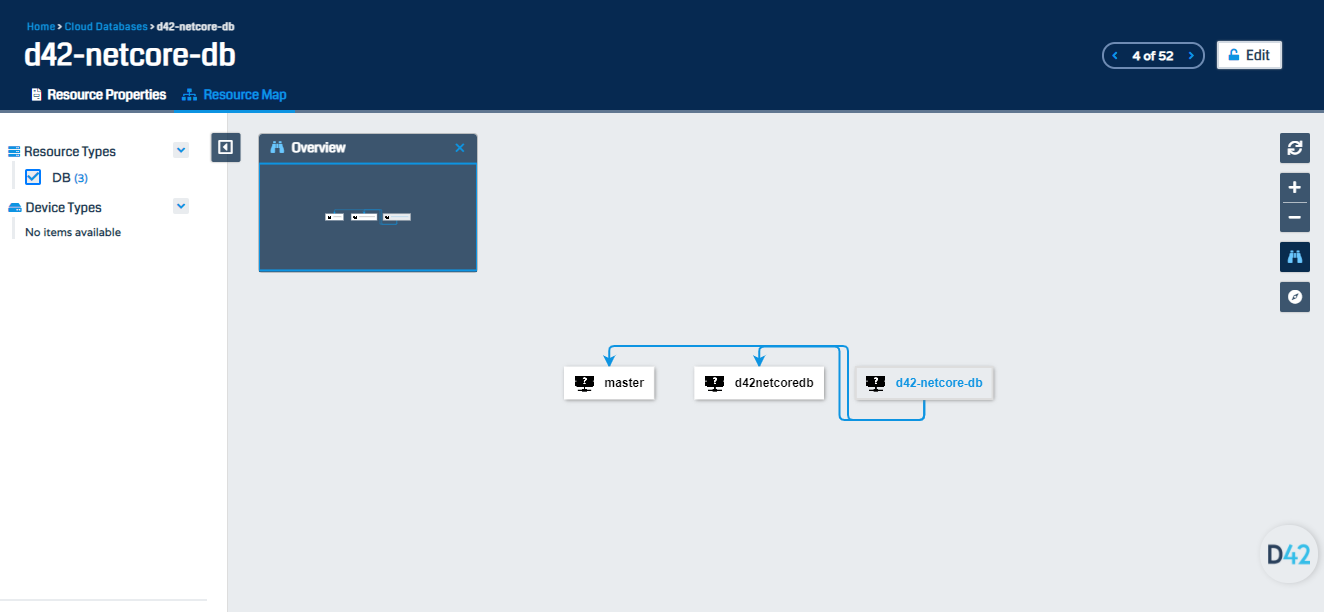
See the Cloud Discovery documentation page on details of adding these new services to discovery jobs. The Managed Resources and Cloud Databases documentation pages provide a view into discovery details.
New User Experience
To help navigate through Device42 in a more efficient manner, we have updated the layout of the top menu, allowing to jump to resources that our customers are most interested in.
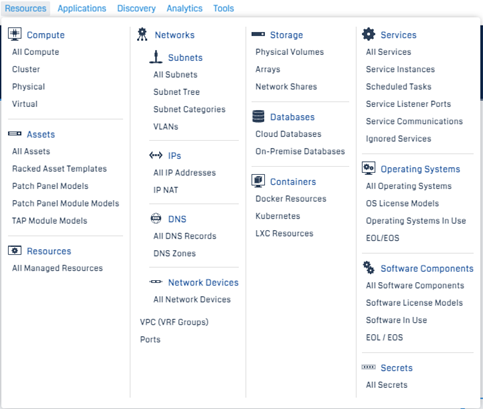
Device42’s new user experience along with being more responsive also include simple and advanced filtering. Advanced filtering allows users to create complex queries using AND, OR operators among other capabilities to find resources quickly and efficiently.

See the Advanced Search documentation page for further details on how to run queries.
Load Balancer Improvements
Load balancers are the cornerstone of any enterprise applications. They serve as the key source of service architecture within IT Operations. If the load balancer goes down business stops, hence knowing its configurations and its relationship to an underlying business application is critical to maintaining that application’s availability. With v17.00.00 Device42 has overhauled how Load Balancer details are stored and displayed.
The changes will allow load balancers to be represented as Resources, as opposed to Devices, with related resource types for components like Virtual Servers, Partitions, Pools, Pool Members, Clusters, and Nodes.
Note: v17.00.00 has support for F5 load balancers, with others planned in a future release.
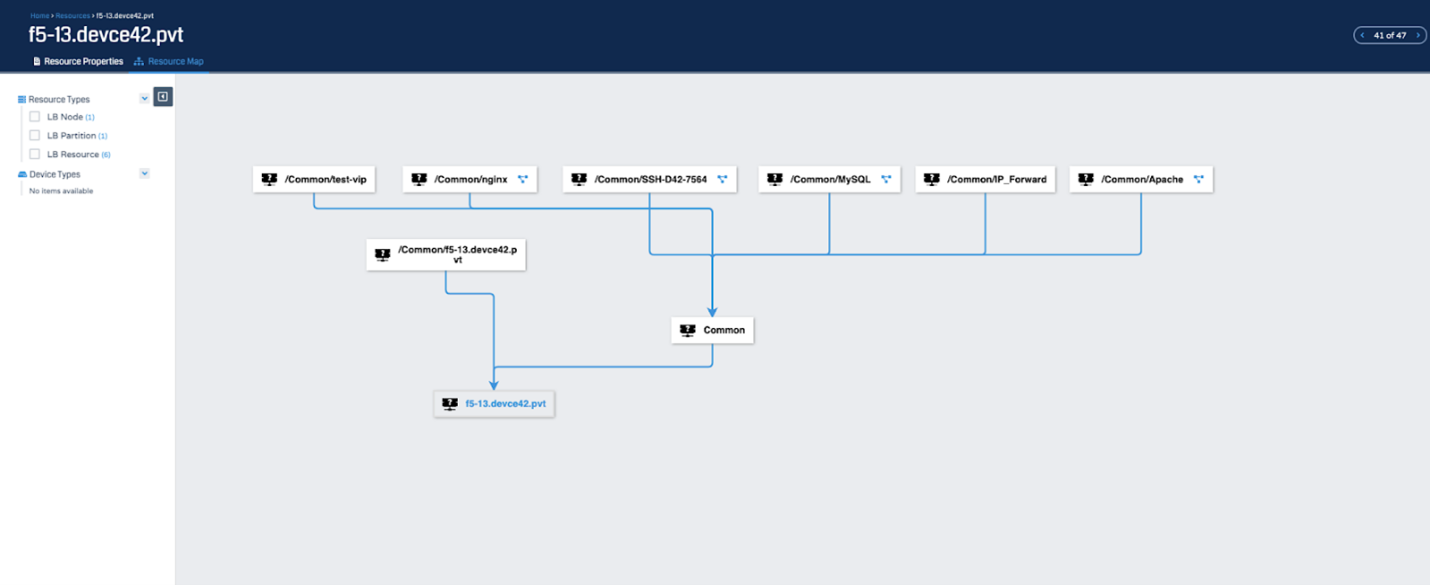
Chart views for Affinity Group now also include Load Balancer improvements.
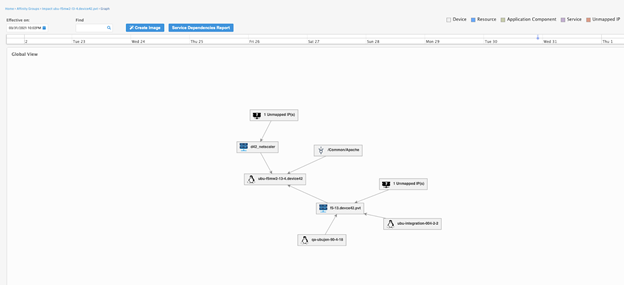
See the Load Balancers documentation page for additional information on the new changes we have added in v17.00.00.
Additional SNMP Discovery Device Support
Device42 SNMP discovery now supports discovery of the following devices:
- Ubiquiti US24
- Aruba JL375A 8400
- Sonus SBC Edge
- ABB UPS
- FS S5850-48T4Q
Known Issues
- Resources created via VMWare discovery jobs with a tag defined in the job will incorrectly have the tag saved as individual letters rather than a full word (e.g., a device with tag “dev” will have its mountpoints converted to resources with tags “d”, “e”, and “v”). This will be resolved in the next update by clearing any single-letter tags on mountpoint resources.
Bug Fixes
- An issue in which the selected option to delete instance not found in Cloud discovery was not deleting terminated instances has been resolved.
- An issue in which MSSQL discovery failed to populate DB instances has been resolved.
- An issue in which powered-off virtual machines were discovered by oVirt/Redhat scan even though option “Ignore Powered OFF VMs” was enabled has been resolved.
- An issue in which PowerEdge R720xd was appearing as an unknown device has been resolved.
- An issue in which an API call to get the port information returned an empty value for remote_device has been resolved.
- An issue in which the building_id column is getting ”Unknown unicode value” when exported from the drop-down action menu has been resolved.
- An issue in which remote collectors were sporadically disconnecting has been resolved
- An issue in which a discovery exception occurs when running discovery on an IBM i as400 using FTP and/or telnet has been resolved
- An issue in which exporting current purchases data always had an exception has been resolved
- An issue in which DOQL query reported the old value for the custom field has been resolved
- An issue in which auto clean rules were resetting the ‘Last Updated’ field has been resolved.
- An issue in which a blank PO date on purchase causes an exception has been resolved
- An issue in which auto clean rule for administrators doesn’t affect the user which was used for the API only calls has been resolved.
- An issue in which the power data in the DOQL report was not being updated has been resolved.
- An issue in which room object templates that refer to Device (Other) subtypes could not be used has been resolved.
- An issue in which vCenter discovery was failing has been resolved.

